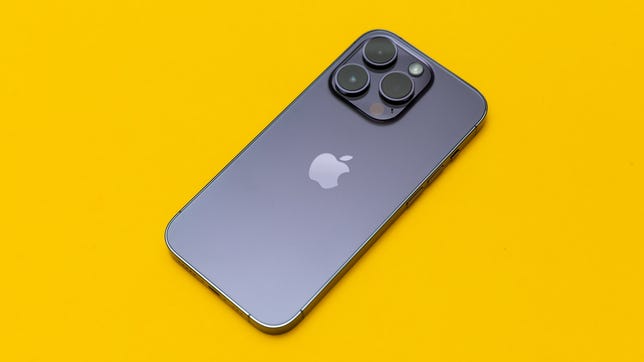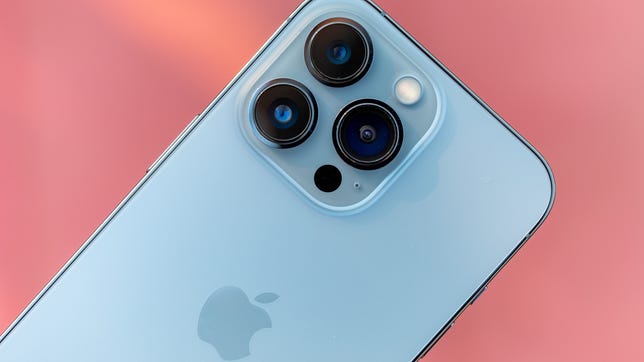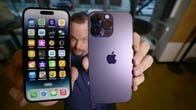This story is part of Focal Point iPhone 2022CNET’s collection of news, tips and advice around Apple’s most popular product.
Apple’s iPhone 14 Pro has several camera system improvements that have led to Stellar reviews, including a 48-megapixel sensor and the company’s new image-processing technique called the Photonic Engine. This immediately puts the iPhone 14 Pro at an advantage over last year’s iPhone 13 Pro and 13 Pro Maxat least on paper.
But how big of a difference do these new hardware and software features actually make in the real world?
I compared the cameras on both phones in a range of challenging situations around San Francisco to find out. All these photos were taken in the default camera app on the iPhone 14 Pro and iPhone 13 Pro, both running the latest version of iOS 16.
You can find out more about the specific improvements to the iPhone 14 Pro’s camera system in this deep dive by my colleague Stephen Shankland. CNET’s Patrick Holland also has a great analysis into the iPhone 14 Pro’s photos and how the Photonic Engine helps boost photo quality in challenging lighting conditions.

Lexy Savvides/CNET
The iPhone 14 Pro 48-megapixel sensor captures more details
On the hardware front, the biggest change between the two phones is the 14 Pro’s new 48-megapixel sensor on the main wide camera that’s also physically larger than the older iPhone, which makes just as much of a difference to photo quality as the increase in megapixels. The 13 Pro uses a 12-megapixel sensor.
Using a technique called pixel binning, the iPhone 14 Pro joins four pixels together into groups to capture 12-megapixel photos with more detail. You can also take a full 48-megapixel image if you shoot in Apple’s ProRaw format, and that gives photographers more flexibility when it comes to editing and recovering shadow and highlight detail among many other advantages.
In good lighting, the 12-megapixel shots from both the iPhone 14 Pro and iPhone 13 Pro look similar at reduced magnification, and it might not be that easy to spot the difference. It’s when you push in a bit that the advantages of the 14 Pro’s new sensor and image processing become clear.
In the images below that I captured in San Francisco’s Golden Gate Park, the tree trunks are more defined and sharper on the iPhone 14 Pro’s photo than those on the 13 Pro. Areas of fine detail, like grass, also retain much more resolution. You can click through to the full resolution image from the iPhone 14 Pro and the iPhone 13 Pro to compare more easily.
The iPhone 14 Pro’s lens on the main rear camera also has a wider field of view than the 13 Pro’s: 24mm versus 26mm. This means you can get a little more in your shot, which might be especially helpful for landscape photography.
The iPhone 14 Pro can take photos at 2x zoom
The iPhone 14 Pro also has another trick up its sleeve: The 48-megapixel sensor can also take 12-megapixel shots at an effective 2x optical zoom. You’ll see a new 2x option in the camera interface. That crops the center of the higher-resolution image to immediately give you more flexibility with focal length, without needing a fourth lens. The iPhone 13 Pro can also take photos at 2x zoom, but it uses digital zoom and doesn’t have the same quality or level of detail as this new technique.
I find the new 2x option on the iPhone 14 Pro helps with portrait mode. Instead of just offering 1x and 3x options like on the older phone, it can also snap portrait mode photos at 2x. This results in more natural-looking shots to my eye. I find it’s more flattering on facial features than the wide look from 1x, or the zoomed-in perspective at 3x.
iPhone 14 Pro vs. 13 Pro: Low-light and night mode
The iPhone 14 Pro has a new image processing pipeline to help improve medium to low-light shots. Combined with the larger sensor, I can see the difference compared to the iPhone 13 Pro in all the photos I shot at dusk. In the photos below, take a look at the detail captured on the tree branches by the skyline.
The newer phone also has better noise reduction in low light, without night mode engaged. Dynamic range is improved in low light too, capturing more shadow and highlight detail than the older phone.
For night mode shots specifically, both the phones use similar exposure times ranging from 1 to 3 seconds depending on the lighting conditions. The iPhone 14 Pro’s picture below has more accurate white balance overall and slightly better detail when you zoom in.
Action mode is the star of the iPhone 14 Pro’s video recording
Both the iPhone 14 Pro and iPhone 13 Pro shoot in 4K at up to 60fps. The video image looks similar when filming on the main rear camera. But the iPhone 14 Pro unlocks additional video tools like Action mode. This is like having a gimbal attached to your phone to give smooth results when moving, except you don’t need any additional hardware — it’s all done in-phone.
Action mode crops in slightly to your image and drops the resolution from 4K to 2.8K. But I think the results are incredibly impressive, especially when compared to the same video shot on the iPhone 13 Pro.
I chased after my puppy, jogged along the beach and took a fast-moving tracking shot in front of a waterfall in the park with Action mode, and the results were remarkable. The iPhone 14 Pro’s video image looks like I was filming with a stabilizer, smoothing out even sudden jerky movements. The iPhone 13 Pro’s video looks much more shaky. You can see those action mode examples in the video below, or at the top of this page.
iPhone 14 Pro has big camera improvements, but the iPhone 13 Pro is still impressive
Apple’s latest iPhone has some significant advantages over last year’s iPhone 13 Pro when it comes to both photo and video capture. Importantly, you don’t need to consider yourself a serious or professional photographer to take advantage of that 48-megapixel sensor. But the iPhone 13 Pro is still at the top of its game in most other areas, and still offers one of the best all-around phone cameras you can get.

Stephen Shankland/CNET
Apple’s iPhone 14 Pro and Pro Max introduce sweeping changes like the Dynamic Island, a new 48-megapixel camera system and Apple’s new A16 Bionic processor. All of these upgrades come together to make for an experience that feels fresh and fast compared to older generations.
Read our Apple iPhone 14 Pro review.

Stephen Shankland/CNET
The iPhone 13 Pro is the best phone Apple produces and it received a stellar score in our review. The new smartphone adds a third rear camera with 3x optical zoom (up from 2x on the iPhone 12), a stainless-steel body and a ProMotion screen with refresh rates up to 120Hz for smoother scrolling.
Read our iPhone 13 Pro review.
You’re receiving price alerts for Apple iPhone 13 Pro (Sierra Blue, 256GB)

